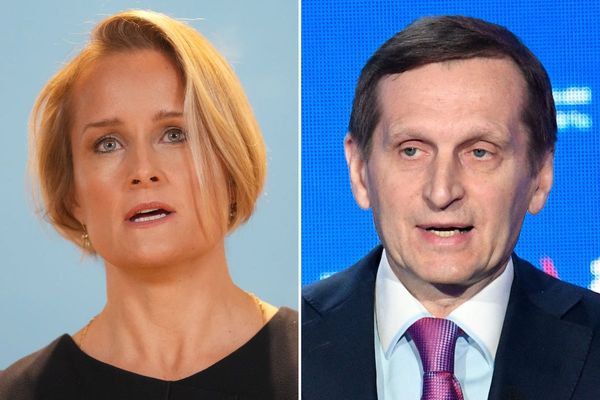
ConocoPhillips (COP) generated over $3.5 billion in free cash flow (FCF) last quarter and could be even more this quarter with higher energy prices. That makes COP stock look cheap now, despite not raising its dividend.
COP is at $96.05 in midday trading, well up from its recent lows, but still off its highs of over $105 earlier in Q2. However, given its strong FCF, its underlying value could be worth over 60% more at $154 per share. This article will show why.

Strong FCF Generation
On May 8, ConocoPhillips reported strong earnings, operating cash flow, and free cash flow for Q1. For example, net income rose from $2.4 billion a year ago to $2.7 billion, not including special one-time items.
More importantly, its free cash flow rose +59% from $2.24 billion a year ago in Q1 2024 to $3.56 billion in Q1 2025. This is despite 16% higher capex spending. This can be seen on page 5 of ConocoPhillips' Supplemental Data release for Q1 (see below):

Moreover, management indicated in the earnings call that its free cash flow will likely rise in an “inflection point” manner. This is because capex spending on four major oil and gas projects will roll off from peak spending.
As a result, we can project significantly higher FCF and FCF margins for the company. That will undoubtedly push COP stock higher.
Forecasting FCF
For example, given that revenue for the quarter was $17.1 billion, the FCF margin was:
$3.564b FCF / $17.101 billion revenue = 0.2084 = 20.8%
We can use that to conservatively project out FCF. For example, analysts' forecasts show $59.6 billion in revenue for this year and $62.03 billion next year. That works out to an average of $60.8 billion in the next 12 months (NTM).
As a result, NTM FCF could rise to $12.65 billion:
$60.8 billion NTM revenue x 20.8% FCF margin = $12.646 b NTM FCF.
That is 52% higher than the $8.3 billion it generated in 2024. Moreover, it does not include any “roll off” or inflection point increase in FCF due to lower capex spending going forward.
As a result, COP stock could be worth significantly more. Let's look at that.
Target Price for COP Stock
One way to do this is to use a FCF yield technique. For example, right now, the dividend per share (DPS) of 78 cents quarterly (which didn't increase after 4 payments) works out to an annual dividend yield of 3.25%"
$0.78 x 4 = $3.12 annual DPS; $3.12 / $96.00 = 0.0325 = 3.25%
Let's assume that FCF will be at least twice any dividend payment. The market will then give COP stock at least a 6.50% FCF yield. Its future market cap can be calculated with this assumption. Here is how that works out:
$12.65b FCF / 0.0650 = $194.6 billion market capitalization
In other words, if ConocoPhillips generates $12.65 billion in FCF, the market will likely value COP stock with at least a 6.50% yield on that FCF.
Today, COP's market capitalization is $121.3 billion, according to Yahoo! Finance. In other words, its future value is worth 60% more:
$194.6b / $121.3b = 1.604 = +60% upside
That means COP stock is worth $153.60 per share (i.e., 1.60 x $96.00 p/sh).
However, not all agree. For example, analysts have lower price targets. Yahoo! Finance shows the average of 30 analysts is $115.73 per share. Similarly, Barchart's mean is $114.56.
However, AnaChart.com shows that 22 analysts have an average price target of $122.93 per share. That is much closer to my price target.
The bottom line is that COP stock looks very undervalued here. Nevertheless, given that this could take a while, one way to play COP is to set a lower buy-in price by shorting out-of-the-money (OTM) put options.
Shorting OTM Puts
For example, look at the July 11, 2025, options expiration period, which is 28 days from now. The $90 put option strike price, which is 6% below (i.e., out-of-the-money) today's trading price, has a midpoint trading premium of $1.19 per put contract.
That gives a short-seller of these puts an immediate yield of 1.322% (i.e., $1.19/$90.00 = 0.01322).

This means an investor who secures $9,000 in cash or buying power with their brokerage firm, can enter a trade to “Sell to Open” 1 put contract at $90.00. The account will then immediately receive $119 per put shorted.
That is why the investment yield is over 1.32% (i.e., $119/ $9,000 = 1.322%). As long as COP stays over $90.00, the secured $9,000 collateral will not be assigned to buy 100 shares.
Even if that happens, the investor's breakeven point is $88.81 (i.e., $90-$1.19), which is 7.5% below today's trading price.
In other words, this is a good way for an investor to be paid while setting a lower potential buy-in point. This does not mean the investor cannot end up with an unrealized loss. That would happen if COP falls below the breakeven point.
But, at least investors know that the long-term value is much higher. Moreover, they can hold the shares or even sell out-of-the-money calls against those new shares.
The bottom line is that investors have a way of potentially buying this cheap energy stock by shorting OTM puts.







